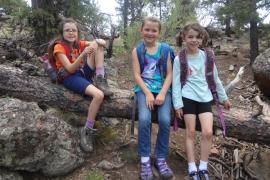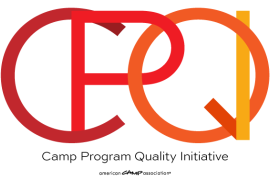Hello Camp Evaluators!
In the last Research 360 post, I offered a quality assessment versus outcomes measurement smackdown in order to demonstrate that one is not better than the other: both are critical to telling a complete story about your programs and campers.
With that in mind, today’s post is all about telling a good story. Not a perfect story, or a complex story, or a final story, but a story that is compelling and doable given your camp’s evaluation capacity. Below are 10 Ways to a Good Story — not a top 10 list or a step-by-step guide, just a sampling of strategies to think about as you work toward using both quality and outcomes to tell your story.
1. Start with the end in mind.
Who will read this story and what do you want them to do once they’ve read it? This answer will help you decide whether to focus on program quality, camper outcomes, or both.
2. Think small.
Choose just one outcome or one area of your program you want to improve. Or, choose one outcome, something relatively easy to measure, like “friendship skills,” and one specific program area that you believe creates that outcome, like “meal time,” or “challenge course activities.” Instead of trying to measure multiple outcomes, focus on just one outcome and one program process.
3. Engage your staff.
Ask your frontline staff, “What do you think campers get out of coming to our camp?” and “What about camp makes that happen?” This questioning could be a part of your staff training, an off-season online discussion, or part of a mid-season check-in. Once your staff have identified an outcome and a potential cause, introduce them to the Camp Program Quality Assessment Tool and ask them how you, as a team, might use it to explore their theory throughout the summer.
4. Engage your campers.
How do your campers/staff want to tell their camp story? Your campers are likely used to participating in evaluation projects, but watch what happens when you invite them to be evaluators alongside your staff. Better yet: Give a small group of campers digital cameras or video recorders and ask them to capture what they like best about camp. Voila! Now you have information about the quality of your program.
5. Listen to your gut.
It is easy to think that numbers are the best way to tell your camp story but, while important, numbers are not perfect. Don’t ignore what you see, hear, and feel in your day-to-day work — you probably have a strong sense of what campers get out of their experience and the parts of your program that produce those outcomes. How do you know these perceptions are true? If the source of this “gut sense” is because you walk around and observe your programs, then think about how you can start systematically recording your observations during your regular tasks. If the source is from talking to parents, then maybe you ask parents if they would be willing to write a testimonial or participate in a focus group. Your gut is a powerful story-teller, so use it to tell your camp story! Just make sure you have the evidence you need to back up your points.
6. Use what you have.
Too often we think that we do not have the time or resources to start collecting information, much less to assess program quality and measure camper outcomes. So, think about what you already have that you can use to tell a compelling story — photos or video? Camper journals? Parent testimonials? Even if what you have is old, messy, or if you have too much, what can you learn from it? Take a small set of whatever existing information you have and use this sample to think about how you gathered that information and how you used that information, if at all. Then, use what you learned about these past efforts to plan new ways to gather the information to tell your story.
7. Go beyond the survey.
Surveying campers is probably the most common way camp evaluators gather information about their program, and rightly so: surveys are [seemingly] simple to create, handy for gathering information from lots of campers, and provide [most often] numerical information, depending on the survey questions. But is there more to the story? Whereas surveys are great for breadth, they often lack depth. Consider adding camper journals or art projects using photo/video as a way to add richness to your story.
8. Make quality an everyday thing.
Assessing program quality can be daunting, because it requires staff to observe and rate one another. But what really makes quality assessment difficult is the approach: if it is used to keep staff accountable, then it is likely to feel formal and frightening. One the other hand, if it is used as an opportunity to grow, then staff are likely to feel more comfortable being observed and will engage more completely when brainstorming program improvements. If quality is a natural and everyday thing, then the information you gather is more likely to be interesting and authentic. Think of it as the “character development” in your story.
9. Take a 360° view.
A good story has multiple dimensions or subplots, and no story can be interesting with only one character. Whether you are most interested in program quality or camper outcomes or both, consider ways to look at them from different angles. Measuring campers’ friendship skills? Why not have them draw a picture of the friends they made at camp. Or use the Staff or Parent Perception Tools to explore campers’ friendship skills from those caring adults’ perspectives.
10. Visualize it.
Great stories today are told in visually compelling ways. Graphs and charts transform numbers and words into easy-to-grasp information and high quality photographs transport your audience directly to your story’s stage: camp and the campers who make it memorable. Visualizing evaluation information is both an art and a science, so start simple, but adhere to this basic principle: less is more.
By now, I have hopefully convinced you to consider gathering both program quality and camper outcomes information in order to tell an interesting and compelling camp story. To support you in this work, the Research 360 blogs will from here focus in one of three areas: tips and tricks to tell your camp story, data visualization, and updates on ACA’s 5-year national research study. Until next time, happy evaluating!
Thanks to our research partner, Redwoods.
Additional thanks goes to our research supporter, Chaco.
The views and opinions expressed by contributors are their own and do not necessarily reflect the views of the American Camp Association or ACA employees.





